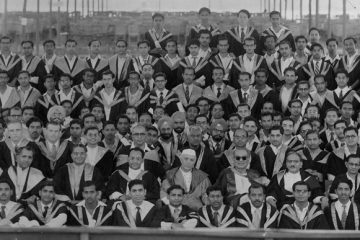
Economic Times ET Energy World India Today Careers360 Millenium Post DD News Business Standard The Week NDTV Shiksha
While passing through the newly developed, urban elite settlements, the dumpsites waiting treatment are becoming increasingly common. Municipal Solid Waste (MSW) in India continues to remain a neglected area with inefficient source segregation. Further, the moisture content in waste adds to India’s challenge in solid organic waste management because of our food habits and socio-cultural habits. This is leading to environmental hazards of pollution of air and nearby water bodies, surface and subsurface soil. Added to this, decomposing organic waste generates methane which is the single largest contributor to global greenhouse gas emissions. With the Prime Minister’s Swachh Bharat Abhiyan set for a new lease of life, a crucial avenue which is now being explored is efficient urban waste management.
A team of researchers led by Prof. Brajesh Kumar Dubey from the Department of Civil Engineering at IIT Kharagpur has adapted a process called Hydro Thermal Carbonization (HTC) for Indian conditions which can effectively manage mixed MSW with high moisture content.
Through the process, most of the mixed MSW can be converted into biofuel, soil amendment and absorbents.
The current waste incineration processes adopted from the developed nations are primarily focused on treating drier waste content. This requires high energy input to combust mixed MSW with high moisture content.
“India’s tropical weather, open collection systems and mixed waste make the output yield much less fuel-efficient. Only 20-30% of the organic fraction of municipal solid waste is being recycled to biofuel. Hence there is a need to develop treatment system which can address the challenge indigenously,” opines Prof. Dubey.
Here is the goal which has been scored by the research team. They have developed a technology to convert the organic fraction of MSW into ‘Hydrochar’ by using a batch reactor. The moisture in the waste is used to the advantage of the process which uses water for the reaction. The process has increased the resource recovery yield to 50-65% of urban organic waste.
“The process novelty lies in the use of water for the reaction thus the moisture in the MSW gets used during the recycling process without requiring any removal of moisture from the segregated waste or high energy intake. This is effective for mixed municipal solid waste management in India,” explained Hari Bhakta Sharma.
For example, 1gm yard waste and 4gm water are being used in the laboratory reactor. The waste output is 1gm of biofuel with a calorific value of upto 24.59 MJ/kg, while the water remains available for reuse.
The key to the success of the technology lies in designing a proper industrial-scale HTC reactor with improved heat integration system. The technology can be deployed by municipalities at various locations within a city thus ensuring easy management of logistics of waste.
Another novelty of this technology is the zero waste scale reached through this process.
“Once the yard waste is entered into the process, the outputs generated are all usable including the water which can either be reused in the processor can be converted to biogas or methane through anaerobic digestion,” explained another researcher Sagarika Panigrahi.
The biofuel generated as the recovered output is comparable to lignite coal which could significantly address the fossil fuel depletion issue and helping to curb air pollution issues, pointed out Prof. Dubey.
The product can further be used as an absorbent to manage soil contamination.
The calorific value or energy yield and quantity yield however are inversely correlated and depends on the end-use of the product.
“So if you are looking for biofuel, the temperature at which the reaction is conducted needs to be kept very high which will increase the calorific value of the fuel however decreasing quantity yield, while in the case of the soil contamination absorbent, the low temperature will increase the product quantity yield with low energy yield,” confirms Hari Bhakta Sharma.
“This could significantly help brownfield sites or contaminated industrial sites or landfills,” added Prof. Dubey.
According to the Ministry of New and Renewable Energy (MNRE) estimates, there exists a potential of about 1700 MW of energy from MSW and sewage. Of this, only about 24 MW have been exploited, according to MNRE. Thus, less than 1.5% of the total potential has been achieved. The waste to energy mandate of Govt. of India could also be met through this innovative process.
“As of July 2017, thermal-based Waste-to-Energy plants in India have a capacity to process 5,300 tons of garbage and produce 53.5 MW/day. There is a big market on waste treatment and this technology can serve well for the organic fraction of municipal solid waste,” hoped Prof. Dubey.
Graphics : Suman Sutradhar




Great work